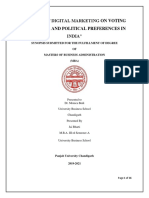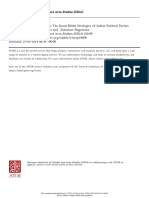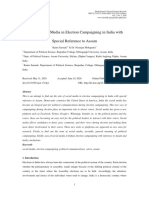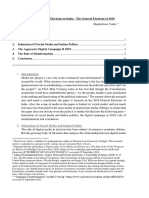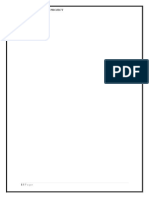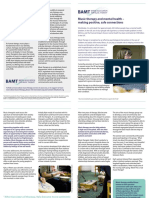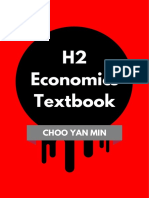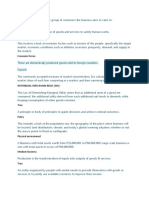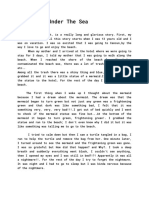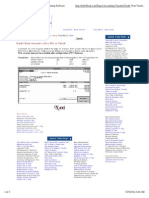Volume-3, Issue-2, February 2025 International Journal of Modern Science and Research Technology
ISSNNo-2584-2706
The Impact of Social Media on Indian Elections
Dr. R. Roopa Tejavathi
Faculty of Political Science
Bangalore City University, Bangalore
Abstract
In recent years, social media has emerged as a to voice their concerns, organize movements,
powerful force reshaping electoral politics in and promote civic awareness.
India. The country, with over 800 million Government bodies such as the Election
internet users and a vibrant democratic Commission of India have initiated steps to
tradition, has witnessed a digital regulate digital campaigning, enforce
transformation in how political campaigns are transparency in political advertisements, and
conducted and how voters engage with promote voter awareness through social
democratic processes. Platforms such as media. However, the rapid pace of digital
Facebook, Twitter (now X), Instagram, change continues to outstrip regulatory efforts.
YouTube, and WhatsApp are now central This paper argues that while social media has
tools for political communication, outreach, democratized political communication and
and mobilization. increased access to political information, it has
Political parties and candidates use these also introduced new vulnerabilities that
platforms to craft highly targeted and threaten the health of India’s electoral
personalized campaign strategies, leveraging democracy. The future of elections in India
data analytics, real-time feedback, and viral will increasingly depend on how social media
content to shape public opinion. This digital is governed, how users are educated to engage
engagement is especially influential among critically with digital content, and how
young voters, first-time voters, and urban platforms are held accountable for their
middle-class populations. Leaders like Prime influence on public opinion and democratic
Minister Narendra Modi have effectively used institutions.
social media to bypass traditional media and In conclusion, social media is both a
directly connect with millions of citizens, transformative and disruptive force in Indian
setting a precedent for political electoral politics. A balanced approach—one
communication in the digital age. that fosters transparency, accountability, and
However, this transformation has brought inclusivity—will be critical to ensuring that
serious challenges. The unregulated spread of technology strengthens rather than undermines
fake news, deepfakes, and political Indian democracy.
propaganda—particularly via encrypted
platforms like WhatsApp—has the potential to Introduction
distort democratic discourse. Misinformation The advent of social media has fundamentally
has influenced voter behavior, stoked altered the dynamics of political engagement
communal tensions, and undermined electoral and electoral processes across the world. In
integrity. Additionally, micro-targeted India, the largest democracy with over 950
political advertising based on harvested user million registered voters as of 2024, the
data raises concerns about privacy and integration of digital technologies—especially
manipulation. social media platforms—into electoral politics
Social media has also contributed to political has become both inevitable and
polarization by reinforcing echo chambers, transformative. The growing penetration of
reducing exposure to diverse viewpoints, and smartphones and the internet, combined with a
fueling online hate speech. Yet, paradoxically, young, tech-savvy population, has positioned
it has created spaces for marginalized India as a key site for the digitalization of
communities, women, and civil society actors democratic participation. From campaign
IJMSRT25FEB018 www.ijmsrt.com
DOI: https://doi.org/10.5281/zenodo.16434623
�Volume-3, Issue-2, February 2025 International Journal of Modern Science and Research Technology
ISSNNo-2584-2706
strategies and voter outreach to public debates Despite these challenges, social media has also
and political mobilization, social media has fostered greater political participation,
become a powerful force shaping the electoral particularly among young and first-time
landscape. voters. Voter awareness campaigns by the
The influence of social media in Indian Election Commission of India and various
elections first became visibly prominent NGOs have effectively utilized platforms like
during the 2014 LokSabha elections and has Instagram and YouTube to reach millions of
only intensified since. Platforms such as citizens, promote voter registration, and
Facebook, WhatsApp, Twitter (now X), encourage informed participation.
Instagram, and YouTube are now central to Additionally, marginalized groups such as
how political parties connect with voters, Dalits, tribals, women, and LGBTQ+
disseminate messages, and counter opposition communities have used digital platforms to
narratives. These platforms offer instant access raise awareness about their issues, contest
to a vast audience and allow real-time dominant narratives, and build solidarity
interaction, making them more dynamic than networks.
traditional print and television media. Political This paper seeks to explore the complex and
leaders now craft their public images and dual nature of social media's impact on
shape national narratives through tweets, live Indian elections. It investigates how social
sessions, short videos, and memes that are media has changed electoral strategies,
widely shared and consumed across digital influenced voter behavior, enabled new forms
spaces. of democratic engagement, and at the same
This transformation has democratized time, introduced significant risks to electoral
communication to a certain extent, enabling integrity, public trust, and social cohesion. The
grassroots voices, independent journalists, and study emphasizes the need for robust digital
civil society actors to engage directly with literacy, ethical political practices, and
citizens. However, it has also given rise to new regulatory frameworks to ensure that social
concerns. The unregulated and often opaque media serves as a force for strengthening
nature of content on social media makes it democracy rather than undermining it.
fertile ground for misinformation, propaganda,
and political manipulation. The 2019 Indian Objectives of the Study
general elections, for example, were marked 1) To examine the role of social media
by an unprecedented spread of fake news, platforms in shaping political
deepfakes, and coordinated disinformation communication and campaign strategies
campaigns, often targeting specific in Indian elections..
communities or polarizing public sentiment. 2) To analyze the influence of social media
The rise of "WhatsApp elections" in rural and on voter behavior, public opinion
semi-urban areas demonstrates how closed formation, and electoral outcomes.
messaging networks can be used to amplify 3) To explore the spread and impact of
rumors and fabricate realities. misinformation, fake news, and
Moreover, political parties have increasingly propaganda during Indian elections
relied on data analytics and micro-targeting through social media channels.
techniques—often using personal information 4) To evaluate the ethical, legal, and
collected without consent—to influence voting regulatory challenges posed by the use of
behavior. This raises serious ethical and legal social media in the electoral process.
questions about privacy, electoral fairness, and 5) To assess the extent to which social media
the psychological manipulation of citizens. enhances or undermines democratic
The use of bots, trolls, and coordinated digital engagement and political participation in
armies has further intensified online India.
polarization, contributing to a toxic political
discourse and silencing dissenting voices. Methodology
IJMSRT25FEB018 www.ijmsrt.com
DOI: https://doi.org/10.5281/zenodo.16434623
�Volume-3, Issue-2, February 2025 International Journal of Modern Science and Research Technology
ISSNNo-2584-2706
This study adopts a mixed-methods especially for the BharatiyaJanata Party (BJP)
approach, combining both qualitative and and its then-prime ministerial candidate
quantitative research methods to NarendraModi. The campaign was highly
comprehensively examine the role of social coordinated online, utilizing Twitter,
media in influencing electoral processes in Facebook, YouTube, and a dedicated mobile
India, including both LokSabha and state app to project a modern, development-oriented
assembly elections. The methodology is image of Modi. Slogans like
designed to explore patterns of digital political ―AbkiBaarModiSarkar‖ went viral, and the
communication, voter engagement, BJP’s IT cell played a crucial role in
misinformation dissemination, and the amplifying messages and attacking opponents
regulatory response by institutions. through memes, hashtags, and digital content.
Social Media and LokSabha Elections
The LokSabha elections, India’s largest and Voter Base and Demographics (2024
most significant democratic exercise, have LokSabha Context)
witnessed a digital transformation over the Category Value
past decade. Social media platforms have Total registered ~960 million
increasingly become central to political voters
strategy, voter mobilization, and narrative First-time voters 18 million+
control in these elections. With more than 800 (18–19 years)
million internet users and over 950 million Voters aged 18–35 ~400 million (approx.
eligible voters, the use of social media has 42% of electorate)
allowed political parties and candidates to Youth with Estimated 70–75% of
connect with the electorate on an smartphone access urban youth
unprecedented scale. Relevance: This young demographic is highly
active on digital platforms and is a key target
Social Media Penetration in India for social media campaigns.
Indicator Value
Internet users in 850+ million 2. The 2019 General Elections:
India (2024) Consolidation of the Digital Campaign
Active social media ~520 million By 2019, the role of social media had
users (2024) deepened further. Political parties heavily
Smartphone users Over 750 million invested in digital war rooms to influence
WhatsApp users in 487 million (largest voter opinion. WhatsApp, in particular,
India user base globally) became the most widely used tool for direct
Facebook users in 369 million (2024) communication, especially in rural and semi-
India urban regions. With over 400 million users in
YouTube users in 467 million India, WhatsApp enabled the spread of both
India campaign messages and, worryingly,
Instagram users in 362 million misinformation. The BJP, Congress, AAP, and
India regional parties all maintained digital teams to
Twitter (X) users in ~28 million monitor trends, counter opposition narratives,
India and deploy targeted advertisements.
Source: Datareportal (2024), TRAI Reports,
Statista Digital Campaign Spending
1. The 2014 General Elections: A Digital Election Year Estimated Digital
Breakthrough Ad Spend
The 2014 LokSabha elections marked a 2014 General Elections ₹30–40 crore
turning point in Indian political 2019 General Elections ₹500–600 crore
communication. For the first time, social 2024 General Elections ₹1,000+ crore
media emerged as a decisive campaign tool,
IJMSRT25FEB018 www.ijmsrt.com
DOI: https://doi.org/10.5281/zenodo.16434623
�Volume-3, Issue-2, February 2025 International Journal of Modern Science and Research Technology
ISSNNo-2584-2706
(Projected) polarization, and the use of bots to trend
BJP’s digital campaign (2019): Spent propaganda.
over ₹200 crore on Facebook and
Google ads. . Misinformation and Fake News
Congress and other regional parties: WhatsApp forwards per day during
Together spent around ₹100–150 crore. 2019 elections: ~60 billion messages
Source: Election Commission data, media globally; India accounted for a major
reports (NDTV, The Hindu), Google Ad share.
Transparency Reports Misinformation incidents: Fact-checkers
3. Campaign Personalization and Targeting like Alt News and Boom Live reported
Social media has allowed unprecedented over 100 viral fake claims during the 2019
personalization of political messaging during election period alone.
LokSabha elections. Using data analytics and Fake news engagement: Political fake
artificial intelligence, parties crafted targeted news had 10x more engagement than
advertisements based on age, caste, religion, factual news on Facebook in India during
location, and user interests. Micro-targeting election season (Oxford Internet Institute,
ensured that each voter segment received 2019).
customized messages—reinforcing loyalty or
swaying undecided voters. For example, 5. Regulation and the Role of the Election
religious content might be sent to conservative Commission
groups, while economic reform messages were To address these challenges, the
shared with young urban voters. Election Commission of India introduced the
Voluntary Code of Ethics in 2019, signed by
Influence on Voter Behavior major social media platforms. The code
Survey (Lokniti-CSDS, 2019): emphasized content transparency, advertising
55% of voters received political content disclosure, and mechanisms for user
through WhatsApp. complaints. Despite these measures,
29% said social media influenced their enforcement remained difficult, as digital
political opinions. platforms operate at a global scale, and
12% said they changed their voting political content often skirts the line between
preference due to social media exposure. opinion and manipulation.
Meta (Facebook) Internal Reports
(Leaked): Political parties use Regulatory Actions
inflammatory content to boost Election Commission’s “Voluntary
engagement—Facebook’s own algorithm Code of Ethics” (2019):
favours divisive posts. o Enforced content transparency.
o Platforms agreed to take down reported
4. Challenges: Fake News and Electo ral political misinformation within 3 hours.
Integrity Meta (Facebook): Established a
While social media has enhanced dedicated India Elections Operation
campaign outreach, it has also created serious Center in 2019.
challenges to electoral integrity. The 2019 Google and Twitter: Published ad
elections saw a surge in fake news, morphed spending reports during the elections,
videos, and hate speech, often spread rapidly identifying top political advertisers.
through WhatsApp forwards. The closed 6. Democratic Potential and Civic
nature of the platform made it difficult for the Engagement
Election Commission and fact-checking On the positive side, social media has
agencies to track and counter misinformation. democratized access to political content,
Many scholars and observers raised concerns enabled independent journalism, and
about manipulated narratives, communal empowered voters to express their views.
IJMSRT25FEB018 www.ijmsrt.com
DOI: https://doi.org/10.5281/zenodo.16434623
�Volume-3, Issue-2, February 2025 International Journal of Modern Science and Research Technology
ISSNNo-2584-2706
During LokSabha elections, voters now of India’s states, social media campaigns in
participate not just by voting, but also by assembly elections are more localized,
engaging in online debates, creating political language-specific, and tailored to regional
content, and calling out misinformation. Youth identities.
participation has particularly grown due to A key feature of social media use in state
digital platforms offering a space for issue- elections is its ability to adapt content to
based politics and civic expression. regional sensibilities. Political parties now
routinely produce campaign materials in
Platform Usage by Political Parties regional languages and focus on state-specific
Party Platform Strategies Used issues such as local development, caste
Focus alignments, agrarian concerns, and religious
BJP WhatsApp, Massive IT cell, sentiments. For example, during the 2023
Twitter, targeted Karnataka Assembly Elections, political
Facebook messaging, messaging was prominently conducted in
influencers Kannada, and regional hashtags like
INC Facebook, Issue-based posts, #NammaKarnataka gained significant traction
(Congress) Instagram, RTI campaigns, on platforms such as Twitter and Instagram.
Twitter youth outreach Short videos, local memes, and influencer-
AAP YouTube, Grassroots videos, driven reels allowed parties to establish
Instagram, local-language cultural connections with younger voters.
Twitter content, direct Platforms like WhatsApp continue to
engagement be the most influential digital tools in state
BJP’s social media volunteers in 2019: elections, particularly in rural and semi-urban
Estimated 1.5 million across India. areas. Thousands of local WhatsApp groups
Congress social media workers: Around are created by party workers to circulate
300,000 (2019 data). campaign messages, voice notes, and viral
Social media has fundamentally reshaped the content aimed at mobilizing support.
nature of LokSabha elections in India. It has However, the encrypted and untraceable
transformed electioneering into a 24/7, data- nature of WhatsApp also makes it a fertile
driven, digital-first enterprise. While it offers ground for misinformation. The 2022 Uttar
greater outreach, personalization, and Pradesh Assembly Elections, for instance, saw
engagement, it also poses serious risks to both the BJP and Samajwadi Party deploying
electoral fairness, truth, and democratic hyperlocal digital strategies through
integrity. As India moves toward future WhatsApp, often leading to the unchecked
elections, balancing the opportunities and spread of fake news and rumor-mongering in
dangers of social media will be critical to politically sensitive constituencies.
preserving the spirit of democratic Regional political parties have shown
participation. remarkable innovation in their social media
strategies. The DravidaMunnetraKazhagam
Social Media and Assembly Elections in (DMK) in Tamil Nadu, for example, has
India utilized humorous and satirical digital content
The increasing integration of social media into to appeal to urban youth. Similarly, the
electoral politics has had a profound impact Trinamool Congress (TMC) in West Bengal
not only on national elections but also on effectively mobilized online Bengali pride
state-level contests across India. Assembly through culturally resonant content during the
elections, which shape the governance and 2021 elections. The AamAadmi Party (AAP),
political direction of India's 28 states, have in both Delhi and Punjab, leveraged YouTube
increasingly mirrored the digitized style of and Instagram for its issue-based campaigns,
LokSabha campaigns. However, given the showcasing education reforms and health
linguistic, cultural, and demographic diversity
IJMSRT25FEB018 www.ijmsrt.com
DOI: https://doi.org/10.5281/zenodo.16434623
�Volume-3, Issue-2, February 2025 International Journal of Modern Science and Research Technology
ISSNNo-2584-2706
services in viral video formats that resonated same time, the reach of digital campaigns is
widely with urban and rural voters alike. still limited in tribal and underdeveloped
Despite the potential for positive engagement, regions where internet penetration remains
social media in state elections has often low. This creates a digital divide in political
intensified political polarization and messaging, which can exclude already
communal tensions. Assembly elections in marginalized populations from full
states such as Delhi (2020) and West Bengal participation in the democratic process.
(2021) witnessed the circulation of In conclusion, social media has emerged as a
inflammatory content, doctored videos, and powerful force in shaping the strategies,
divisive narratives aimed at stoking religious narratives, and outcomes of state assembly
and caste-based anxieties. The anonymity and elections in India. It has enabled regional
speed of digital dissemination make it difficult political actors to reach diverse audiences in
for regulators to contain such content in real innovative ways while simultaneously posing
time. This digital toxicity, often amplified by new risks related to misinformation,
trolls and bot accounts, undermines healthy polarization, and digital manipulation. As
political discourse and challenges the integrity internet connectivity and smartphone usage
of the electoral process. continue to grow, the influence of social media
To mitigate the misuse of social media, the in assembly elections is expected to deepen
Election Commission of India has partnered further, making it essential to develop
with digital platforms during state elections. inclusive, ethical, and well-regulated digital
Initiatives such as the Voluntary Code of political practices at the state level.
Ethics and the cVIGIL mobile application
were introduced to flag and remove offensive Conclusion
or false content and to enable voters to report The integration of social media into the
electoral violations. However, the enforcement electoral process in India marks a significant
of these measures remains uneven, and real- transformation in the country's democratic
time content monitoring in regional languages practices. From LokSabha elections to state
is still a significant challenge due to limited assembly contests, social media has emerged
resources and rapidly evolving narratives. as a powerful instrument for political
Data-driven campaigning has also become a communication, mobilization, and persuasion.
core feature of assembly elections. Political Platforms such as Facebook, WhatsApp,
strategists now rely on sentiment analysis, Twitter (X), Instagram, and YouTube are now
online feedback loops, and constituency-level central to how parties design their campaigns,
digital outreach to shape their messaging. The engage with voters, and shape public
involvement of consultancies like I-PAC, discourse.
which ran AAP’s successful campaign in This digital shift has introduced several
Punjab (2022), shows how analytics, surveys, democratic opportunities. Social media allows
and influencer outreach are reshaping how for real-time communication, direct
local elections are fought and won. Campaign engagement with the electorate, and the
slogans like ―EkMaukaKejriwal Nu‖ gained democratization of information beyond the
traction not just through rallies, but via filters of traditional media. It has empowered
YouTube ads, micro-influencers, and youth and marginalized voices to participate in
WhatsApp forwards. political conversations and has enabled
The influence of social media on voter regional parties to amplify localized issues
behavior in state elections is especially visible through creative, language-specific digital
among urban youth and middle-class voters. campaigns. In both national and state
According to Lokniti-CSDS surveys, around elections, political narratives are increasingly
30–35% of voters in urban constituencies constructed and contested online.
acknowledged that social media had an impact However, the rise of social media also presents
on their political opinions and choices. At the serious challenges. The proliferation of
IJMSRT25FEB018 www.ijmsrt.com
DOI: https://doi.org/10.5281/zenodo.16434623
�Volume-3, Issue-2, February 2025 International Journal of Modern Science and Research Technology
ISSNNo-2584-2706
misinformation, fake news, hate speech, and 4. Freedom House. (2022). Freedom on the
algorithm-driven echo chambers has distorted Net – India. https://freedomhouse.org
political discourse and sometimes deepened 5. Google Transparency Report. (2019).
communal and ideological divides. Micro- Political Advertising in India.
targeting, data manipulation, and the use of https://transparencyreport.google.com
digital surveillance tools raise concerns about 6. Indian Express. (2019, May 23). How
electoral fairness and voter privacy. These social media shaped India's 2019
risks are especially severe during state elections. https://indianexpress.com
elections, where localized tensions can be 7. Lokniti–Centre for the Study of
inflamed rapidly through social media Developing Societies (CSDS). (2019).
networks.Moreover, the uneven access to Social Media & Political Behaviour:
digital platforms due to the digital divides Voter Survey Report.
risks excluding rural and marginalized https://www.lokniti.org
communities from fully benefiting from this 8. Ministry of Electronics and Information
new political landscape. Despite efforts by the Technology (MeitY). (2023). Digital India
Election Commission and digital platforms to Progress Report. https://meity.gov.in
regulate content and promote fair practices, 9. Oxford Internet Institute. (2019). Global
enforcement remains limited and often Disinformation Order: 2019 Global
reactive. Inventory of Organised Social Media
In conclusion, social media in Indian elections Manipulation.
is both a transformative force and a site of https://comprop.oii.ox.ac.uk
contestation. It has the potential to deepen 10. Pew Research Center. (2019). Internet and
democratic participation and political Social Media Use in Emerging
awareness, but also to undermine trust, Economies. https://pewresearch.org
transparency, and cohesion if left unchecked. 11. Statista. (2024). Number of social media
As digital technologies continue to evolve, the users in India.
future of Indian democracy will depend on https://www.statista.com/statistics/278407
striking a balance between openness and /number-of-social-network-users-in-india/
regulation, innovation and responsibility. 12. Scroll.in. (2021). Bengal elections: Digital
Strengthening digital literacy, enhancing campaigns, memes and misinformation in
platform accountability, and reinforcing Bengali cyberspace. https://scroll.in
ethical political communication are essential 13. Sundararajan, R. (2020). Social Media
steps to ensure that social media becomes a and Indian Democracy: Friend or
force for democratic deepening rather than Foe?.Economic and Political Weekly,
democratic disruption. 55(22), 25–29.
14. Twitter India Transparency Reports.
References: (2019–2024). Election Integrity Efforts in
1. Bhattacharya, A. (2019). The rise of India. https://transparency.twitter.com
WhatsApp political campaigns in India. 15. YouTube India Trends. (2023). Politica l
Quartz India. content analysis during state elections.
https://qz.com/india/1604523 https://youtube.com/trends
2. Chadwick, A., Dennis, J., & Smith, A. P.
(2016). Politics in the age of hybrid
media: Power, systems, and media logics.
In The Routledge Companion to Social
Media and Politics (pp. 7–22). Routledge.
3. Election Commission of India. (2019).
Voluntary Code of Ethics for the General
Election 2019. https://eci.gov.in
IJMSRT25FEB018 www.ijmsrt.com
DOI: https://doi.org/10.5281/zenodo.16434623










